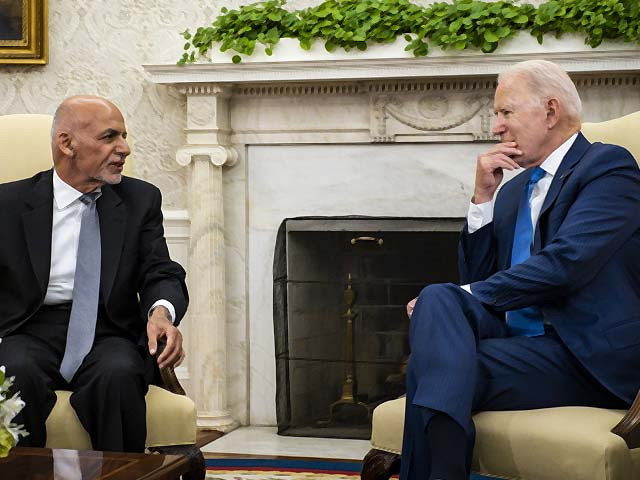
The logic behind the US’ military withdrawal from Afghanistan
Russian Foreign Ministry spokeswoman Maria Zakharova described the US’ actions in Afghanistan as illogical in mid-July, but they actually do indeed carry with them a certain logic, albeit of a seemingly schizophrenic nature that’s difficult for most observers to identify.
Many across the world are confused by the US’ decision to militarily withdraw from Afghanistan, not to mention at the accelerated pace that US President Biden demanded, and this includes Russian Foreign Ministry spokeswoman Maria Zakharova. She described the US’ actions there over the past two decades as illogical in an interview with Russian TV in mid-July. It’s understandable why she’d think that, but they actually do indeed carry with them a certain logic, albeit of a seemingly schizophrenic nature. Here are some of my prior works dealing with this topic, the relevance of which I’ll explain below:
* 14 February 2020: “The US’ Central Asian Strategy Isn’t Sinister, But That Doesn’t Mean That It’ll Succeed”
* 15 April 2021: “Why America Couldn’t Win Its After In Afghanistan”
* 17 May 2021: “Does The US Have Ulterior Motives For Withdrawing From Afghanistan So Hastily?”
* 5 July 2021: “Pakistan-US Relations Are Entering An Unprecedented Era”
* 18 July 2021: “Korybko To Indian Media: The New Quad Is Better Than The Old One”
Basically, the US thought that it could export Colour Revolution- and terrorist-driven regime change scenarios across the region from its centrally positioned Afghan stronghold in order to ultimately keep Russia and China divided by Hybrid War. Central Asia narrowly avoided a proto-”Arab Spring” campaign in summer 2010, after which the larger region’s resilience grew to the point where the US realised it couldn’t succeed. Its hasty withdrawal is meant to create instability that ISIS-K could exploit as a last-ditch effort, but failing that, America wants to economically compete in the region through PAKAFUZ, ergo the “New Quad” with Pakistan at its core.
To simplify the somewhat confusing logic involved, the US’ primary motivation was to destabilise the larger Central Asian-South Asian space and beyond from Afghanistan. When this failed, it hastily withdrew from Afghanistan in the hope that ISIS-K would rise in its wake. Since that’s not happening, America now wants to take advantage of the trilateral Pakistan-Afghanistan-Uzbekistan railway that was agreed to in February to transition from geopolitical competition to geo-economic competition. It believes that this is its best bet to retain some influence by positioning itself as a “balancing” force between Russia and China in the region.
To be clear, its prospects of success in this respect and comparatively small, but the plan is still strategically sound in theory. At the very least, geo-economic competition entails mutual benefits for all the parties involved, especially the countries in which this competition takes place, unlike the zero-sum outcomes associated with the geopolitical competition that the US used to provoke. That doesn’t mean that America won’t attempt some geopolitical plots in the future in an attempt to give itself a geo-economic edge in the aftermath, but just that its modus operandi of regional engagement is noticeably changing.
Russia’s, China’s, and Pakistan’s regional visions have always remained consistent, unlike the US’. Neither of these three have sought to destabilise the region through geopolitical schemes, but always wanted to economically integrate with it, nowadays much more so than in the past. That’s because they’re all pursuing complementary connectivity strategies that converge in Afghanistan and Central Asia: Russia’s Greater Eurasian Partnership (GEP); China’s Belt & Road Initiative (BRI); and Pakistan’s plan to expand BRI’s flagship project of the China-Pakistan Economic Corridor northwards (N-CPEC+).
What all of this means is that the US is playing catch-up with Russia, China, and Pakistan in Central & South Asia when it comes to geo-economics after its geopolitical plans of the last two decades totally failed. It also can no longer play by its own rules anymore like before because its economic engagement with this trans-regional space will be dependent on PAKAFUZ. The expectation is that this might moderate America’s behaviour by incentivising it to not destabilise the relevant countries since its own economic interests would be adversely affected as well. It remains to be seen whether that’s too high of a hope, but it’s still a credible one for now.




COMMENTS
Comments are moderated and generally will be posted if they are on-topic and not abusive.
For more information, please see our Comments FAQ